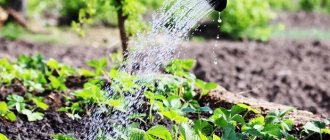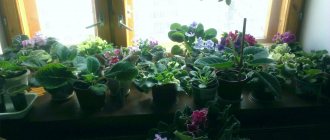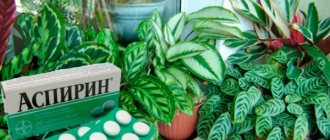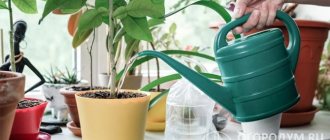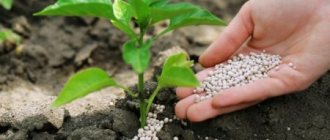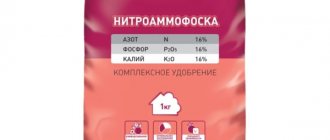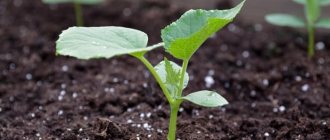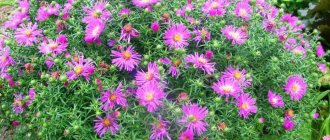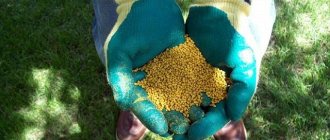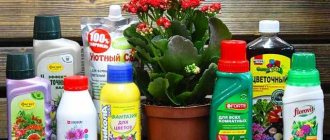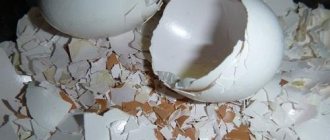Sooner or later, every gardener thinks about how to feed indoor plants so that they develop and bloom better. And this is where the fun begins, because there are many fertilizers. Which one should you choose? Let's figure it out together!
When choosing food for indoor plants, you should consider many factors. The type of plant, its state of health, the period of development - these are just the main points that you should pay attention to before starting the procedure. To orient you in the world of fertilizers, we will consider their main types, advantages and disadvantages.
When is it necessary to fertilize indoor plants?
Plants require fertilizing throughout the growing season. At this time, their aboveground and underground segments are actively growing. In order for the home flora to develop evenly, it needs help. The growing season varies, and therefore it is important to take into account the characteristics of the plants. By default, the need for fertilizer occurs in spring and summer. But there are specimens that continue to bloom in autumn and winter. There is no universal rule for applying fertilizing.
It is important to remember that increasing daylight hours signals the plants’ need for nutrients. If your region is in the south, then you can feed the flora from the end of February. In cold areas, plants “wake up” closer to mid-March. The end of the growing season occurs when daylight hours decrease. In autumn, plants go into hibernation, so excess fertilizer is harmful to them.
To understand the rules of feeding, you need to remember three facts:
- When the plant goes into dormancy, it does not need to be fertilized. This period is accompanied by a complete stop of growth and occurs in the winter-autumn season. Plants that go dormant during these months include beautifully flowering specimens. In autumn they shed their leaves and expose the above-ground part of the plant.
- If the plant begins to prepare for the dormant period, feeding should be stopped gradually. With decreasing sun hours, the flora slows down its development and does not require nutrients in the same volume. During this phase, it is important not to overfeed the plant, otherwise you risk losing it.
- Not all plants go into deep dormancy. There are specimens that continue to stay awake all winter. Such representatives of the flora require rare and moderate feeding. If you don't take care of them all winter, you may not wait for them to wake up in the spring.
Important. Feeding indoor plants from October to February is possible only if the room is well lit. Violation of this rule leads to burns of the root system and accumulation of unabsorbed substances.
Feasibility of use, methods: general provisions
Regarding chlorine tolerance and potassium requirements, the following groups of crops are distinguished:
- Potassium-loving. There is often a lack of potassium fertilizers that are insensitive to chlorine: most vegetable crops, berries, grains, including sunflower, corn, buckwheat, barley, millet. Sugar beets, fodder beets, spinach, and celery are also potassium-loving.
- Neutral. Cereals and legumes, grasses (perennial, annual) are considered not demanding of potassium.
- Chlorophobic. Excess chlorine is perceived negatively by: tobacco and grapes, potatoes and tomatoes, beans, cucumbers, berry bushes. Being potassium-loving, they need to regulate doses, timing, and application methods.
The so-called chlorine included in the preparation. chlorophobic plants have a negative effect. Thus, in nightshade and root vegetables, chlorine reduces the concentration of starch. In the nutritional scheme for potatoes, tomatoes, grapes, and tobacco, it is embedded in deeper, more humid layers of soil, from where chlorine is washed out. As a result of positive adsorption, potassium is retained in the arable layer.
In the case of chlorophobic crops, taking into account the ability to migrate, potassium is added during autumn plowing. In closed ground - when planting seedlings, with root feeding.
Granulated white potassium, due to its small, instant fraction, is more often used in case of severe potassium starvation for foliar feeding.
The mechanism of fertilizer consumption by different crops is subtle. Some stop absorbing it already at the flowering stage (flax), others - at the so-called stage. milky ripeness (legumes, grains). Vegetable crops and berries often consume it relatively evenly during the growing season - potatoes, cabbage, beets, berries, etc. In addition, the advisability of application depends on the composition of the soil and climatic conditions. Therefore, there are no universal methods for calculating doses, instructions, or recipes. There is experience gained over the years, extensive knowledge and practice, which they are guided by - as the best of instructions.
Types of fertilizers
Depending on the criterion, there are several classifications of fertilizers for home flora. The main feature is the presence of organic matter:
- Organic - the components of fertilizers are natural materials. Natural substances have a mild effect and do not injure plants. The disadvantages of this option are a strong odor and dirty stains on the leaves. The organic group includes manure, peat, compost and processed green plants.
- Mineral - fertilizers that are created on the basis of chemical elements. Flora easily absorbs these components and quickly becomes saturated with them. When using mineral fertilizers, it is important for the grower to follow the dosage. Excess elements lead to burns or death of the plant.
Fertilizers also differ in the form of release:
- Liquid. They are sold in the form of concentrates, which must be diluted with water before use. This form is considered the most common.
- Soluble. They have the consistency of a powder that dissolves in liquid. To prepare the solution correctly, it is necessary to mix the substance until smooth.
- Granular. The granules are sprinkled near the plants and then absorbed into the soil. Pre-dissolution in water is not required. The method is used for garden plants.
- Tablets. The fertilizer is immersed in the soil, where it is activated during watering. The disadvantage of this method is the uneven distribution of nutrients.
Organic
The strength of organic fertilizers is their naturalness. They help the plant develop and do not harm it.
Common organic fertilizers include:
- Manure. Used for garden plants, but also suitable for indoor plants. It is not used fresh because it causes burns. Compost needs from four months to three years to accumulate useful substances. At home it is applied in the form of a solution.
- Peat. Helps increase humus in the soil and makes it breathable. Helps reduce the effects of harmful chemicals in the soil. The component becomes effective when wood ash or superphosphate is added.
- Bird droppings. It is applied to the soil in wet, dry form or as a solution. In liquid form, the litter takes a week to infuse. It is diluted in water in a 1:1 ratio. After the expiration date, the concentrate is diluted with an additional 10 parts of water.
- Compost. Prepared on the basis of manure or plants. Weeds, grass clippings and leaves are collected from plants. Then garden soil and manure are added. Manure compost includes soil and peat.
By the way! In addition to manure and peat, bone meal and sawdust can be used as organic matter.
Mineral
Mineral fertilizers are divided into groups according to their active components. There are three main types:
- Nitrogen. To replenish nitrogen reserves, urea, ammonium and calcium nitrate and ammonium sulfate are used. Fertilizing plants occurs in several stages. Nitrogen in excessive quantities is dangerous.
- Phosphorus. The lack of phosphorus is compensated for by superphosphate (simple or double) and phosphate rock. Superphosphate is easily soluble in water. Flour is a sparingly soluble species and is applied only to acidic soil.
- Potassium. The flora receives potassium through potassium salt, potassium sulfate or potassium chloride. If the fertilizer contains chlorine, then it is advisable to apply it with the onset of autumn. This way, harmful components are washed away without harming the flora.
Reference. If you do not pour out enough solution, you can add it. But if there are too many chemicals, the plant will be damaged.
Natural
Natural fertilizers include common products whose benefits you may not realize. You don't have to go to a flower shop or compost to get these ingredients.
Such unobvious supplements are:
- Coffee grounds. The element copes with lowering soil acidity and loosening. Used when transplanting a plant into a new pot.
- Tea brewing. A weak brew feeds indoor plants. It is not a self-sufficient fertilizer, but allows you to supplement basic care.
- Citrus peels. An infusion is prepared from them. To do this, take a liter jar, put the crushed peel in it and pour boiling water over it. The liquid is infused throughout the day and then filtered. To reduce the concentration, the infusion is diluted with water to a liter.
- Banana skins. Makes it easier for plants to replant. The crushed skins are mixed with soil. As the product rots, it will add useful microelements to the soil.
- Onion peel. It is applied to the soil in the form of a decoction. 50 grams of husks are poured with two liters of boiling water and put on fire for 10 minutes. Then the broth is infused for 3-4 hours. Before watering the plants, filter the infusion and pour it into a spray bottle.
Reference. Nettle decoction is used as an ambulance for depleted soil. But to achieve the effect, it is necessary to select fresh grass.
Calcium
The divalent calcium ion is of great importance in plant life. It is present in all cellular structures and stabilizes their functions.
Calcium is especially important for the normal development and activity of the root system.
With a deficiency of this element, the formation and growth of roots is delayed. Lack of calcium primarily affects the development of young organs. A characteristic sign is discoloration of the growth cone and young leaves, as well as their curling. Brown spots are also observed on young leaves.
Excess calcium negatively affects the absorption of iron, zinc, and manganese.
up
up
In what cases will they help?
Plants themselves notify gardeners about a lack of nutritional components. The owner’s task is to timely diagnose warning signs and eliminate them. The needs of the flora are concentrated around three elements: nitrogen, phosphorus and potassium. The disadvantage of each of them has its own characteristic features.
Nitrogen
Nitrogen has the status of the main nutrient element for all representatives of the flora. The plant absorbs this component when its stems and leaves develop.
If access to the element at the roots is reduced, the grower observes the following manifestations:
- leaves turn pale due to low chlorophyll content;
- Tillering and flowering weaken;
- the stem becomes thinner and may break if handled carelessly;
- the ovaries fall off prematurely;
- seeds and fruits will not have time to develop.
Important. Excess nitrogen leads to the growth of the green part of the plant to the detriment of the fruit. Prolonged lack of the element leads to yellowing of the leaves.
Phosphorus
Phosphorus controls energy processes that take place at the cellular level. It helps plants ripen and bloom in a timely manner. Another useful function of the element is considered to increase the resistance of flora to diseases.
Phosphorus deficiency can be recognized by the following symptoms:
- the lower leaves take on an unnatural dark green hue;
- leaves become covered with brown or red-violet spots;
- shoots stop growing;
- new leaves grow small, and the buds do not open.
Important. Plants overfed with phosphorus cease to accept iron and zinc.
Phosphorus-potassium
Potassium phosphorus helps plants properly absorb water and normalizes metabolism. It plays an important role during the period of active growth, as it increases the plant’s resistance to the vagaries of the weather. Without phosphorus-potassium supplements, the flora cannot develop a root system that will remain resistant to fungi and other pests.
Plants are notified of a lack of phosphorus-potassium group fertilizers as follows:
- change in leaf shape;
- drying of leaves (starts at the edges); healthy and shrunken zones are separated by a brown stripe;
- in citrus and nightshade plants, the internodes are shortened, and the leaves become wrinkled and curl upward;
- leaves become covered with necrotic brown spots and fall off due to an acute lack of phosphorus and potassium;
- the buds open later than expected.
Important. Excess potassium is indicated by pale or discolored foliage.
Why do plants need nitrogen and how to determine its deficiency
It is not too difficult to determine nitrogen deficiency yourself. A deficiency of this element in the soil becomes a serious problem for cultivated crops, so you need to pay close attention to the following signs:
- growth and development delays;
- change in the natural color of the leaves to a pale yellow color;
- the appearance of so-called burns and premature death of plants;
- reduced protein content in grain crops.
Ready-made soils, in which seedlings are most often grown, may initially be characterized by an insufficient amount of nitrogen. Among other things, excessive or too frequent irrigation measures that wash away nitrogen salts can contribute to a decrease in the content of this element in the soil . Some plants, due to their botanical characteristics, require increased amounts of nitrogen-containing components.
Names and ratings of fertilizers for home fertilizing
Among the fertilizers that are popular among gardeners are the following:
- BioMaster. A line of fertilizers that are suitable for different types of plants. It is available in liquid form and requires prior dilution. The cost of fertilizers varies from 120 to 160 rubles.
- Master Agro. A universal granular fertilizer that nourishes and strengthens home flora. Fertilizer is used sparingly, and the price for one package is 50 rubles.
- Cytovit. Complex fertilizer based on organic components. Available in 1.5 ml ampoules, which are filled with water in the specified proportions. One ampoule costs 120 rubles.
- Florist Micro. Its effect is similar to mineral fertilizers (azophoska, superphosphate and others). The fertilizer is sold in bottles. One spoon of the substance is enough to prepare a solution for 8 liters. A bottle costs about 100 rubles.
- E-Alpha. Japanese fertilizer that promotes plant development. The line contains products that are intended for certain types. One bottle of E-Alpha will cost the grower 100 rubles.
Reference. Plants react to fertilizers in different ways. To determine the appropriate option, you need to try several fertilizers and look at the result.
Bor
The value of boron for a plant is very diverse.
With a lack of boron, the development of the conduction system is primarily impaired. Assimilates formed in the leaves cannot move to other plant organs, which inhibits photosynthesis.
A lack of boron causes the death of young parts of the plant, retards the growth of all its organs, disrupts the normal development of roots, buds and leaves, the top becomes brown and falls off.
The development of reproductive organs is also greatly affected by boron deficiency. Boron toxicosis is especially often observed in indoor plants, which is expressed in the browning of the edges of the leaf blade. First, the edges of older leaves turn brown, then younger ones, and finally the entire leaf blade turns brown and dies.
Share the link
The best folk remedies for flower growth
Plants were fertilized long before the advent of store-bought products. For feeding we used available materials:
- Ash. Disinfects the soil and protects plant roots from rotting. In dry form, it is used when transplanting plants. You can also make an infusion from it and use it as a supplement. To do this, you need to dilute a spoonful of ash in a liter of water.
- Nettle. Revitalizes depleted soil. To prepare the tincture, you need to take 100 grams of herb and add a liter of water. After a day of infusion, the concentrate is diluted with water in a ratio of 1:10.
- Yeast. They stimulate plant growth by activating the release of carbon dioxide in the soil. A yeast infusion consists of 10 grams of this product, a tablespoon of sugar and a liter of water. The liquid is infused for 20–23 hours and then diluted with water 1:5.
Despite their beneficial properties, folk remedies are not self-sufficient. They are not able to provide plants with all the important elements and must be supplemented with other fertilizers.
Efficiency relative to soil composition
The effectiveness of potassium will be higher on soils with the so-called. low absorption capacity - sandy, sandy loam, sod-podzolic, red soil, peat-bog and floodplain soil due to the easy migration of chlorine into the underlying layers. It will give good results in moist areas on soddy-podzolic, podzolized, leached chernozem and loam, and on gray forest soils.
On gray soil, chestnut soils, typical southern chernozem, the effect is little pronounced. Potassium is used in case of deficiency for potassium-loving crops - vegetables, beets, sunflowers, etc., on gray soil and chestnut soils with sufficient irrigation.
Salt marshes, as a rule, are rich in potassium: the use of potassium-containing preparations is not practiced on them.
Attention! When applied to acidic, strongly acidic soils, an increase in pH is observed due to the content of aluminum and exchangeable hydrogen, due to the physiological acidity of potassium. Negative consequences are observed only with potassium-loving crops with long-term use - this is why crop rotation is important.
